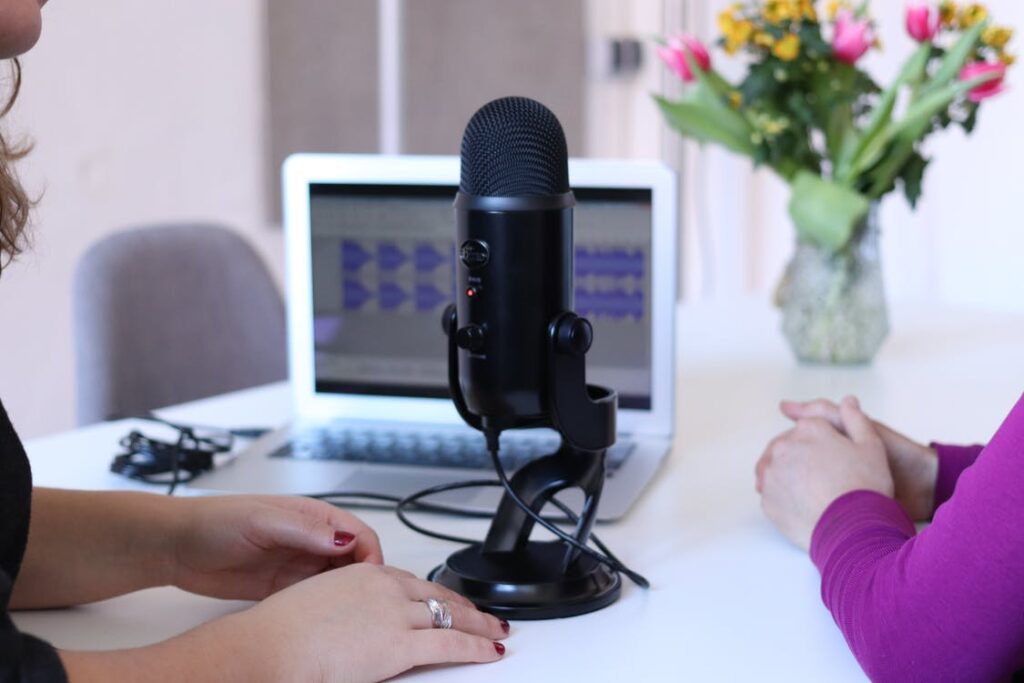Cable microphones were a harsh reality just a few years ago. They were very impractical because they tied you to one place and provided only a limited set of functions. However, with the development of technology, microphones with cables have replaced wireless microphone systems that have pushed the boundaries of the possible. Today, even wireless lavalier microphones are available allowing the performer and presenter to move around freely without destroying the audio quality. Wireless microphones can be attached to both phones and cameras and provide amazing sound. If you want to learn how to get the most out of your professional wireless microphone and extend its range, keep reading.
1. Frequency coordination

If you want to optimize the range of your wireless microphone, it is necessary to achieve frequency coordination, that is, to use the appropriate frequencies to achieve the best sound quality. This is a necessary prerequisite to get the desired result, because the microphone system will not work well if the frequencies are not configured correctly, even if the receiver and transmitter are in close proximity. The choice of appropriate frequencies largely depends on the location.
If multiple wireless transmissions are used at once then all frequencies must be matched. However, frequency configuration does not have to be a difficult task. Nowadays, there are a large number of wireless microphone systems that can independently achieve frequency coordination depending on the location. In this case, the frequency spectrum is constantly selected, scanned by the receiver, and the information is further forwarded to the transmitter. The frequencies are continuously changed to get the desired sound, without interference, and all this happens completely imperceptibly.
SYNCO provides a category of lapel microphone wireless at 2.4G which could be mounted to both phones and cameras. This microphone wireless at 2.4G lifts limits of cables and allows the performer and presenter to move around freely without destroying the audio quality. All this thanks to the detection of occupied frequencies and the achievement of frequency coordination.
2. Choosing the right antenna

Choosing the right antenna and its orientation is another way to achieve a better wireless connection and improve the sound quality of your wireless microphone for iphone or camera. Professional wireless system is always found to have two components, the transmitter which stays close to the talent, and the receiver which picks up sound from the transmitter and goes with the sound mixers. If you want to optimize transmission distance and signal quality, there are two basic ways to achieve this: the first is to improve transmitter power, and the second is to increase receiver sensitivity. However, this is only a case in theory.
While it would be truly amazing to be able to improve the signal quality of a wireless lavalier microphone by affecting transmitter power or receiver sensitivity it is true that we can only act by choosing the optimal antenna. The signal is received via the antenna of the receiver, so by influencing this segment of the microphone system we can really make a difference and improve the microphone range.
Make sure the antenna is properly positioned and oriented to improve reliability. Remember to spread the antennas at least a quarter of the wavelength apart and find out about other things that can affect the signal quality and microphone range.
3. Separating the transmitter and receiver

Another way to extend the range of your wireless microphone and improve its wireless performance is to separate the transmitter and receiver. Although it sounds very simple, it is true that signal interference is often caused by the transmitter and receiver being placed too close. The thing is that the transmitter produces energy that needs to be transmitted to the receiver, but if they are placed in the immediate vicinity one spectrum can take that energy and block it so that it cannot be transmitted to the receiver, despite the fact that he is looking for it. This is especially pronounced when a 2.4 GHz system receiver is near a Wi-Fi transmitter, but also when the receiver is near a high-power radio transmitter. Separate the receiver and transmitter to the optimal distance so you can enjoy maximum wireless performance.
4. Select the appropriate batteries

Although you may not have thought of it that way, choosing the material for your microphone can really have a huge impact on its performance. We recommend that you always use rechargeable batteries designed specifically for the wireless microphone. Make sure that these batteries are of high quality, preferably lithium or alkaline disposable batteries. These batteries have almost the most stable output voltage, which contributes to optimal signal quality. If the voltage is too low this can lead to sound distortion and poor quality of your material. Choose the optimal batteries and charge them regularly to contribute to extending the range of your wireless mic.
5. Prevent power interruptions if possible

Wireless microphone performance can vary significantly if frequent power interruptions occur. This means that you should make an effort to prevent frequent microphone on and off, in order to optimize its range and overall performance. If you want to avoid such situations, we suggest buying a wireless mic that has the option of power blockage. If this is not an option, then consider setting up a mechanical lock (such as a medical tape) that will prevent you from accidentally turning off the microphone.
Conclusion
Wireless microphones offer many benefits nowadays. The main one is certainly the fact that the microphone does not bind you to one place, but you can move freely without fear that it will affect the signal quality. If you want to extend the range of the wireless microphone and improve the sound quality, we suggest that you take into account the frequency coordination and choose the right antenna (as well as placing it in the right spot). Make sure to separate the transmitter and receiver, select the appropriate batteries and prevent power interruptions if possible. Paying attention all of these details will ensure that you optimize the functions of your wireless microphone and create the high-quality content you want.
 Imagup General Magazine 2024
Imagup General Magazine 2024



